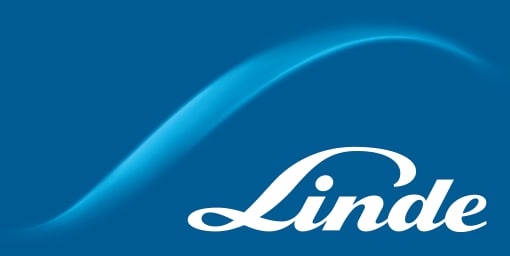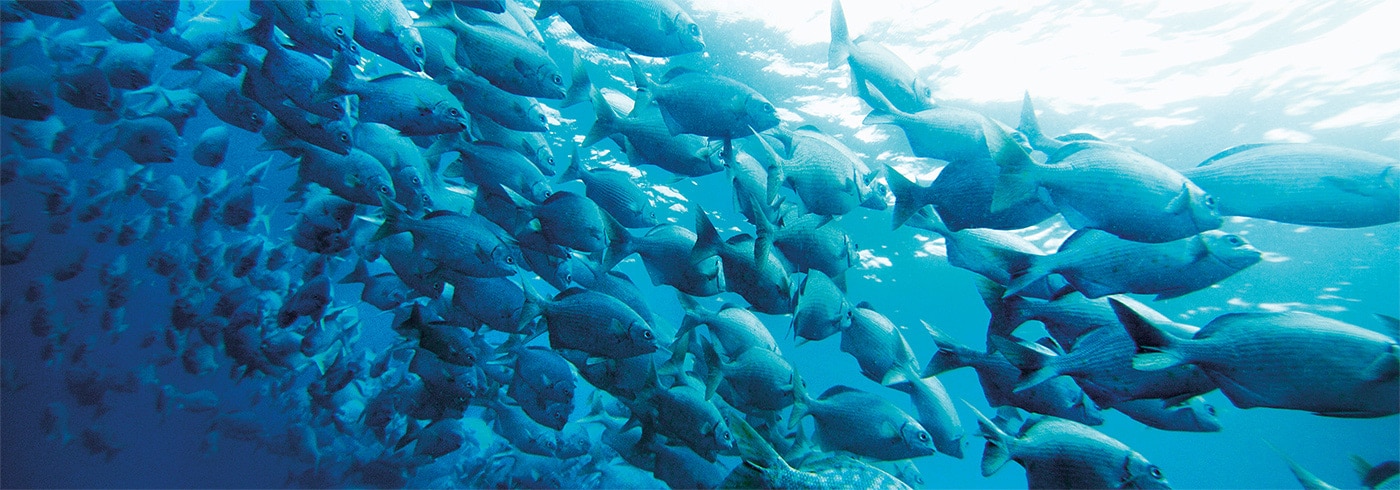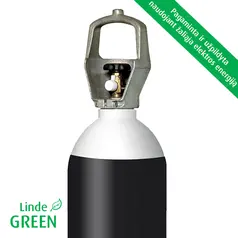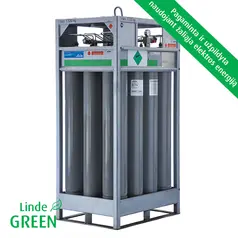Aquaculture solutions to streamline oxygenation and emergency oxygen supply
Aquaculture with its complex onshore and offshore fish farming systems has become the production of choice when it comes to meeting the rapidly rising global demand for fish. Yet the industry is facing a number of challenges in supplying a healthy aquatic environment for best results.
Supplementary oxygenation is the key to enhancing a fish farm’s stocking density, to keeping it disease-free and the productivity and overall profitability high. A perfectly balanced oxygen saturation will:
- ● Improve feed conversion ratio (FCR) for feed cost savings
- ● A reduction in the FCR from 1.5 to 1.0 can lower production costs by up to 20%
- ● Raise specific growth rate (SGR) for increased profitability
- ● Increase fish growth rates even on higher stocking densities
- ● Better fish healthy and reduced mortality
Negative impact of low oxygen levels
Saturation levels can drop to 85% with no negative effect on fish well-being, yet once it falls to 75%, the fish reduce their metabolism. Below that level, appetite decreases further, at 60% the fish start to die. Massive mortality results if oxygen saturation keeps falling to reach 40% or even 30%.
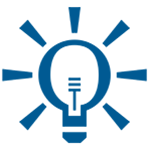
Did you know?
“Dissolved oxygen is by far the most important chemical parameter in aquaculture. Low-dissolved oxygen levels
are responsible for more fish kills, either directly or indirectly, than all other problems combined. Like
humans, fish require oxygen for respiration. The amount of oxygen consumed by the fish is a function of its
size, feeding rate, activity level and temperature. Small fish consume more oxygen than do large fish
because of their higher metabolic rate.”
(A Fish Farmer’s Guide to understanding water quality, LaDon Swann (Purdue University))
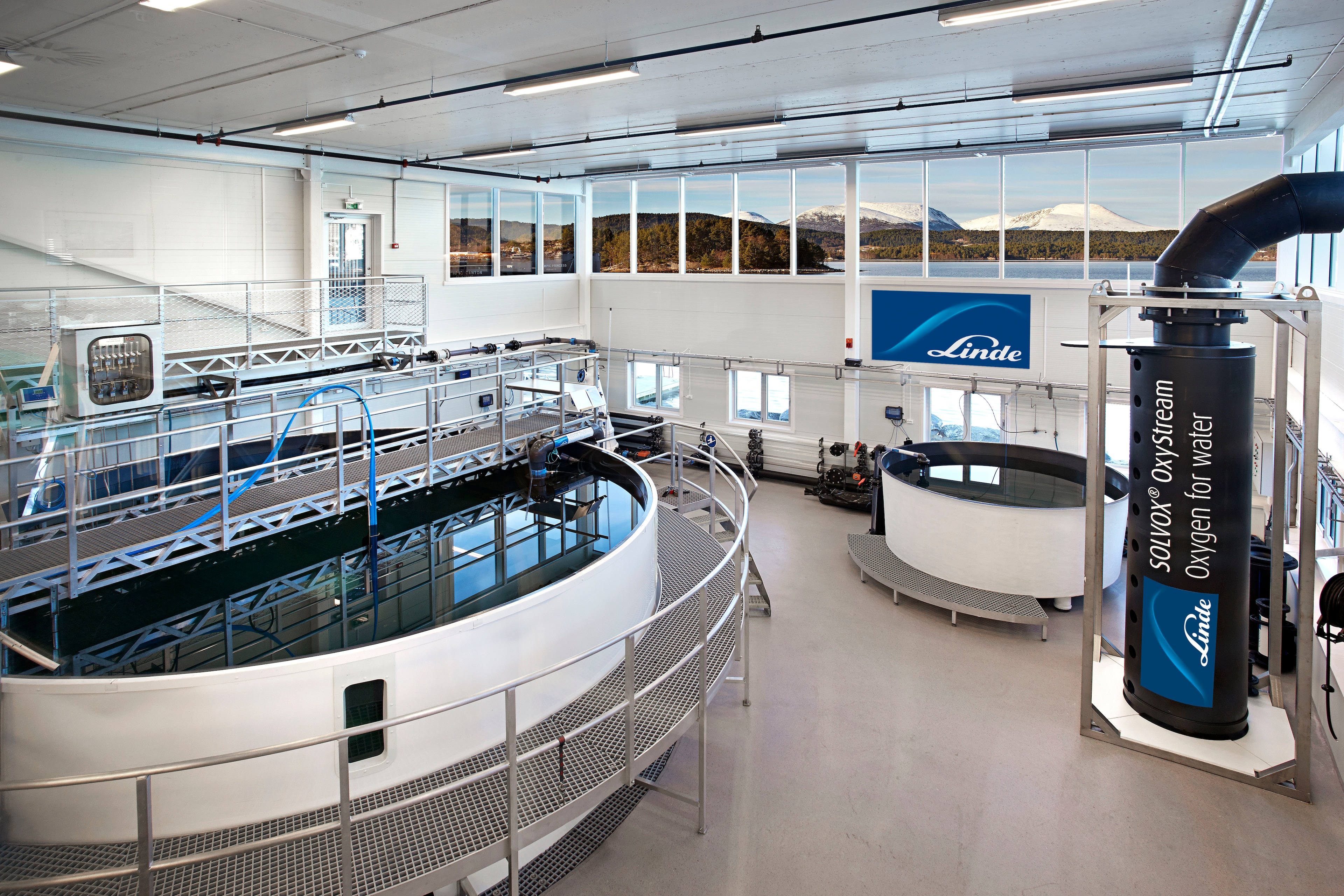
Innovation Centre for Aquaculture and Water Treatment
We have worked with aquaculture topics since the early days of this industry and
are commited to make a difference to our customers with our inventions - now and in the future.
Linde has a Innovation Centre for Aquaculture and Water Treatment in Ålesund, Norway.
Specifically, new
applications and solutions will be researched and developed at the centre to ensure the future of
sustainable aquaculture.
We are proud to offer our customers the international exerpertise with a range of services like training,
performance measurement and proof-of-concept simulations.
Oxygenation in Aquaculture
Lack of oxygen can cause massive harm to fish, reducing appetite, compromising growth and well-being, and ultimately resulting in death. Following chart visualises the impact of oxygen saturation on the growth rate, mortality and food conversion ratio (FCR) of salmon for instance.
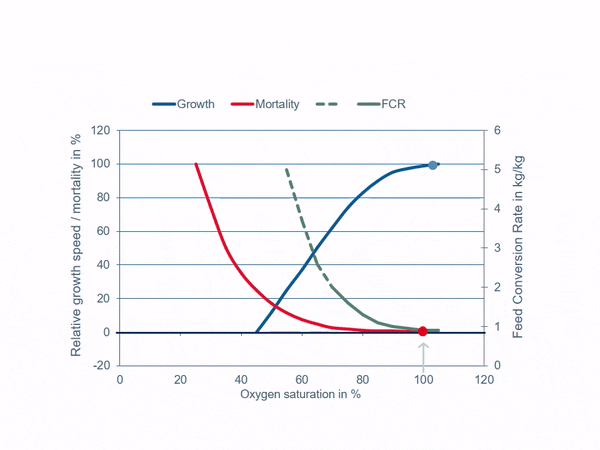
Our offering for the aquaculture industry
Our aim is to support the fish farms of all sizes, so that as many people as possible can enjoy the nutritional benefits of the fresah fish without compromising tomorrow’s marine ecosystems.
SOLVOX product line
SOLVOX A® reduces nitrogen and total gas pressure during the water oxygenation process. Therefore, there is normally no need for aeration of raw water. It is available in a variety of options adapted to your individual needs for tanks with a water flow ranging from 75 l/min to 9000 l/min. For the optimal solution, we recommend that you always combine SOLVOX A with SOLVOX stream.
SOLVOX ® B diffusion hose is a perforated hose used for supplying oxygen to fish tanks and for emergency oxygenation. It is also used for oxygen supply when transporting live fish and the supply of oxygen and CO2 for anaesthetising/sedating the fish. SOLVOX B dissolves oxygen in the water by small bubbles generated through the perforations in the hose. In aquaculture, diffuser hoses are used to stabilise the oxygen levels directly in the fish tank.
SOLVOX C cones are designed to increase the concentration of gases in water to a rather high level. In standard operation, the gas transfer efficiency is close to 100%. The operation the cone is simple: as water and gas enter from the top, the water jet forces the water to mix intensively with the oxygen bubbles, thus creating a high specific interface and a high turbulence at a top of the dissolver.
SOLVOX CV is an additional system to boost the oxygenation capacity of SOLVOX C cones, allowing up to 50 % higher oxygen dosing without increasing the water flow rate or energy consumption. SOLVOX CV uses a patented venturi nozzle to re-inject oxygen which is gathered at the top of the cone back into the water feed pipe. The installation can be done without any time consuming shut down. The SOLVOX CV is flanged directly onto the water feed pipe of the cone. By doing so, the water flow rate into the cone can be increased by up to 25% above nominal value, which then gives you an additional 25% increase in oxygen capacity.
SOLVOX ® CD ceramic diffusers are used to dissolve oxygen and stabilise the levels of oxygen directly in the fish tank. The ceramic diffusers can also be used for emergency oxygenation. SOLVOX CD ceramic diffusers transfers gas into water by generating micro-bubbles at low pressure (maximum pressure 3 bar). SOLVOX CD also provide an aeration/stripping effect of unwanted gases.
SOLVOX® CV is a patented product which is fitted to the water supply to the AGA oxygen cone, SOLVOX C. Inside the SOLVOX CV, specially designed nozzles are connected to a hose from the bleeder valve at the top of the cone. These nozzles create a vacuum that sucks undissolved oxygen from the top of the cone and mixes it in with the flow of water. Both “new” and re-circulated oxygen are supplied to the flow of water via the nozzles in the SOLVOX CV.
The cabinet is connected permanently to the gas pipeline network via a 22 mm oxygen pipe. The pressure on the network can be read from the pressure gauge. Compressed oxygen can quickly be connected as all the components are ready for use inside the cabinet. The cabinet is designed to be kept outdoors.
The dosing cabinet distributes and controls the oxygen from the distribution network to the tank using the customer’s own PLS system. The dosing cabinet is divided into two separate sections, one for normal operation and one for emergencies. The oxygen used for operation is dosed through two rotameters. One of the rotameters feeds oxygen for normal consumption and has to be adjusted gradually according to the oxygen consumption. The other rotameter is fitted in series with a solenoid valve. This valve is controlled by the output saturation in the tank and opens to allow additional oxygen when needed, to keep the oxygen saturation at a constant level in the fish tank.
SOLVOX ® Mix makes it possible to mix water with high oxygen saturation into a main flow without degassing and reduced efficiency. It is especially adapted nozzle unit used in conjunction with installations with SOLVOX ® C (cone). SOLVOX ® Mix is used when pressurized, highly oxygenated water from SOLVOX ® C is to return to a water stream that has a lower pressure.It can be installed at tank level for individual oxygenation, or in the main water supply to the plant to provide basic oxygenation.
SOLVOX ® OxyStream is a low-pressure oxygenation system for vessels with seawater, brackish water and fresh water. The microbubbles created by SOLVOX Oxystream reduce the concentration of dissolved nitrogen and the total gas pressure of the water. Due to this beneficial effect, external degassing units have become obsolete in many cases. SOLVOX Oxystream achieves maximum effect beginning at about 15‰ salinity and requires a pressure of merely 0.05–0.2 barg to oxygenate the water, strip nitrogen, and create optimal tank hydrodynamics for fish production. The low pressure requirement makes the system very energy-efficient.
SOLVOX® Stream creates a better tank environment and improves the well-being of the fish. It provides good tank hydraulics and even oxygen distribution throughout the water volume. SOLVOX® Stream creates a better tank environment and improves the well-being of the fish. It provides good tank hydraulics and even oxygen distribution throughout the water volume.
We supply rotameters in various sizes with capacities ranging from 0.4 kg O2/hour to 9.0 kg O2/hour at a pressure of 6 bar (maximum operational pressure 10 bar). At other pressures the capacity is corrected using tables in our datasheet.
Handy Polaris is simple to use and has a straightforward menu. It takes fast and accurate measurements/logging of O2 and temperature in both salt and fresh water.
Equipment for optimised dissolution of oxygen in water, perfect distribution of oxygenated water to the fish and a regulation concept for smooth and reliable operation.
- SOLVOX® A low-pressure exchangers
- SOLVOX® B diffusion hose
- SOLVOX® dissolver cone
- SOLVOX® CV recirculation device cone
- SOLVOX® CD ceramic diffuser
- SOLVOX® CV cone booster
- SOLVOX® F back-up cabinet
- SOLVOX® dosing cabinet
- SOLVOX® Mix nozzle unit
- SOLVOX® low-pressure dissolver
- SOLVOX® streamline
- Rotameter
- Handheld Oxygen meter
SOLVOX® A low-pressure exchangers for salt water and brackish water
SOLVOX A® reduces nitrogen and total gas pressure during the water oxygenation process. Therefore, there is normally no need for aeration of raw water. It is available in a variety of options adapted to your individual needs for tanks with a water flow ranging from 75 l/min to 9000 l/min. For the optimal solution, we recommend that you always combine SOLVOX A with SOLVOX stream.
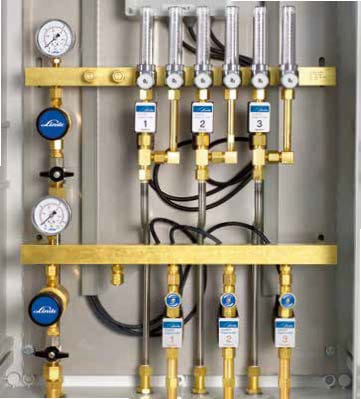
What do our customers say?
“It was very reassuring to know that the Linde’s team really knew what they were
doing. Calculating key factors such as the mass balance calls for expert insights – and the obvious expertise of
the Linde application engineers really built trust and confidence in the capabilities of SOLVOX OxyStream,”
Sveinbjörn Oddsson, COO at Matorka

